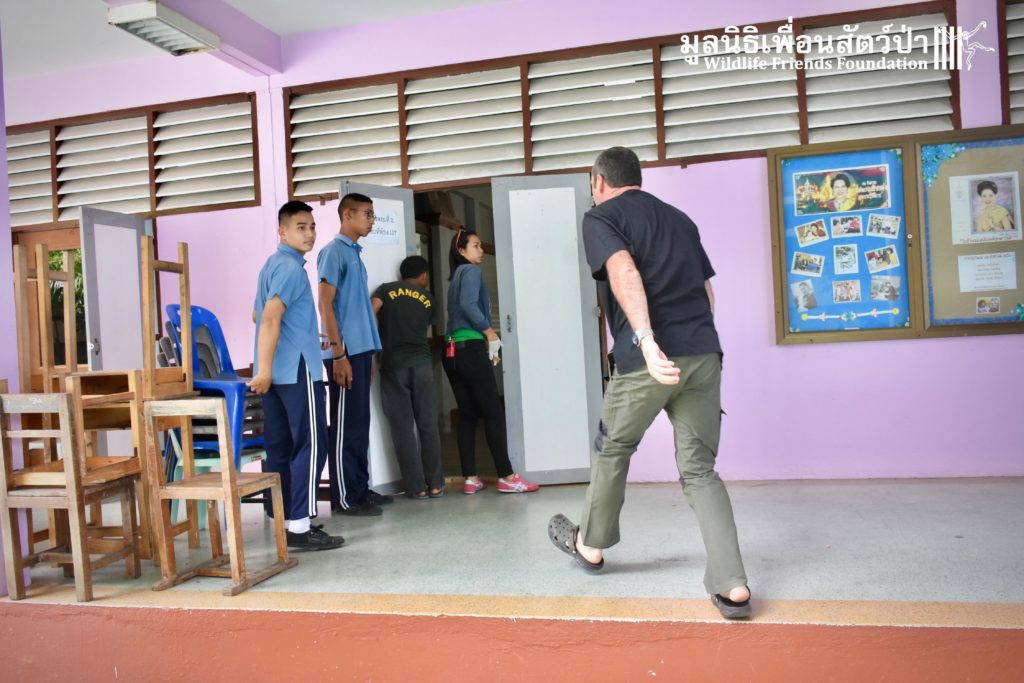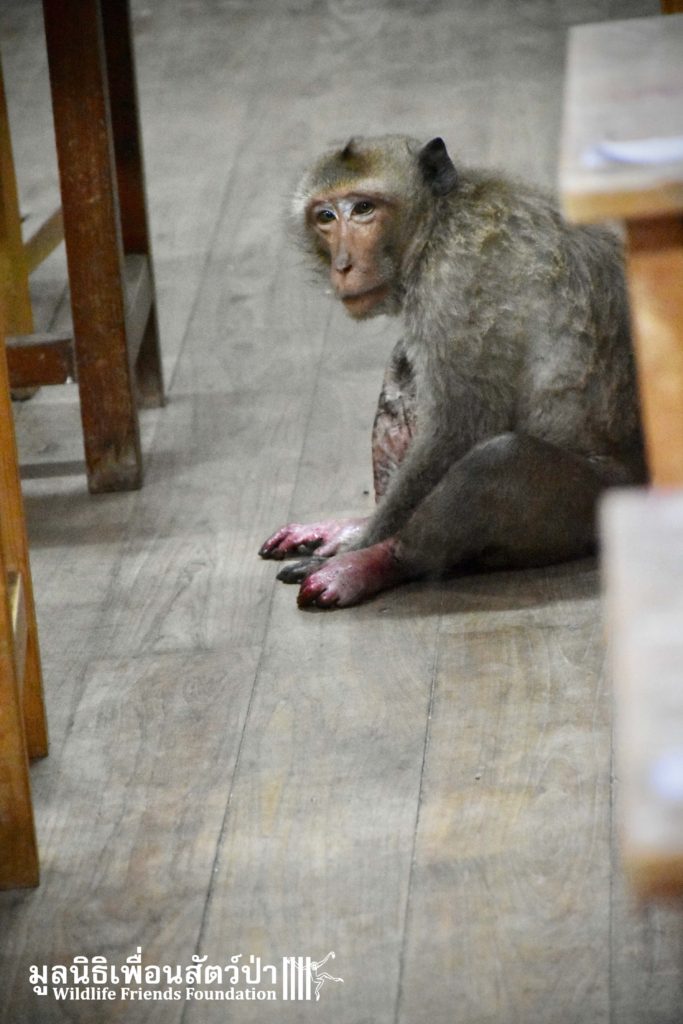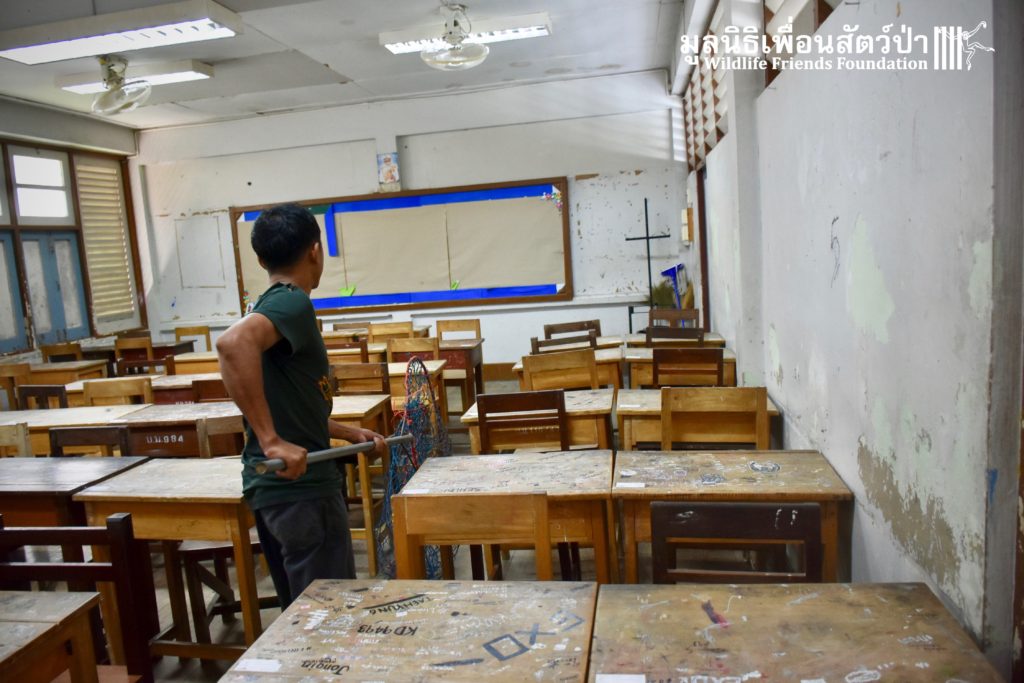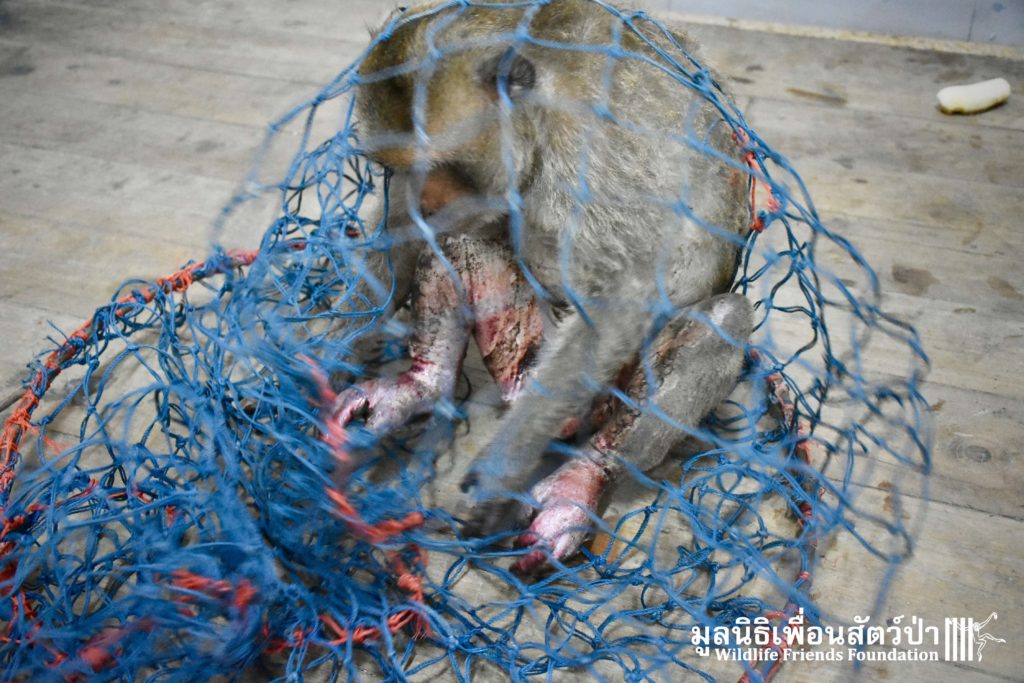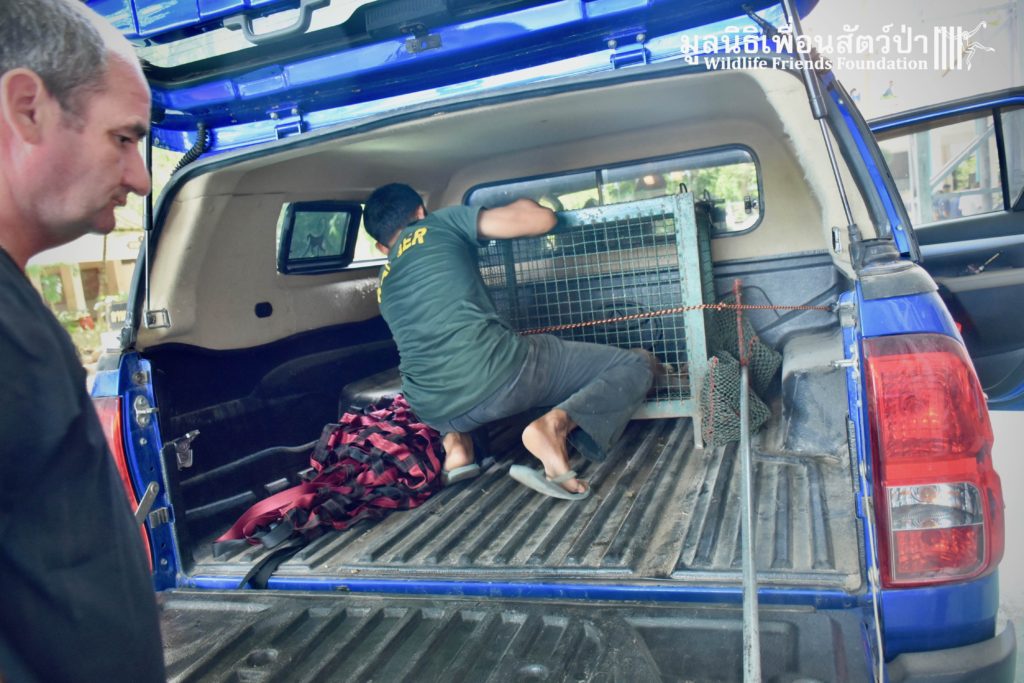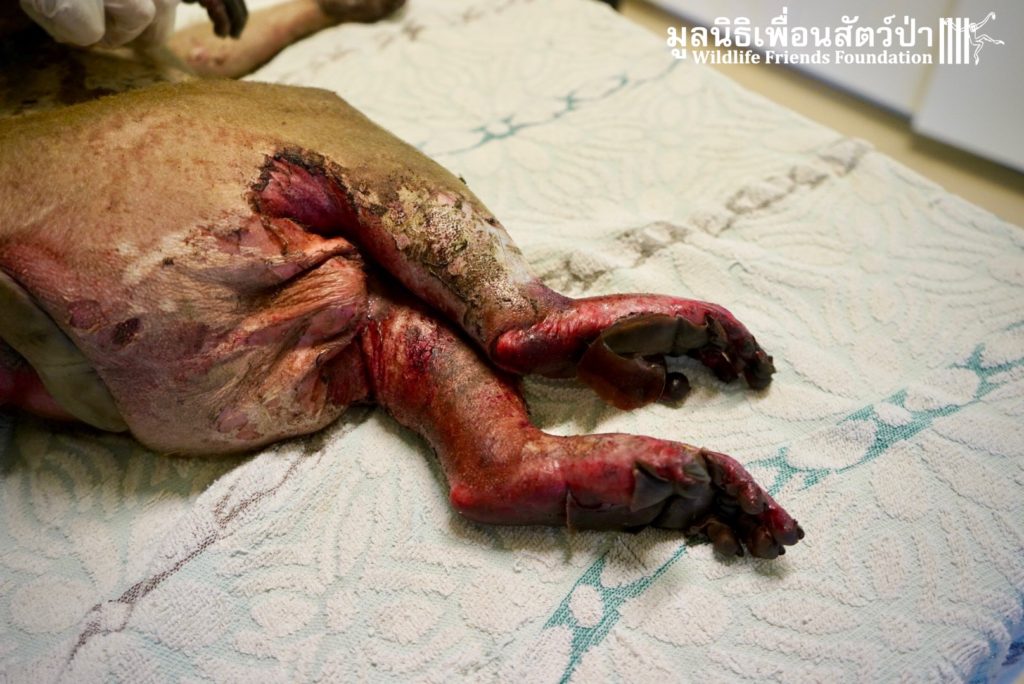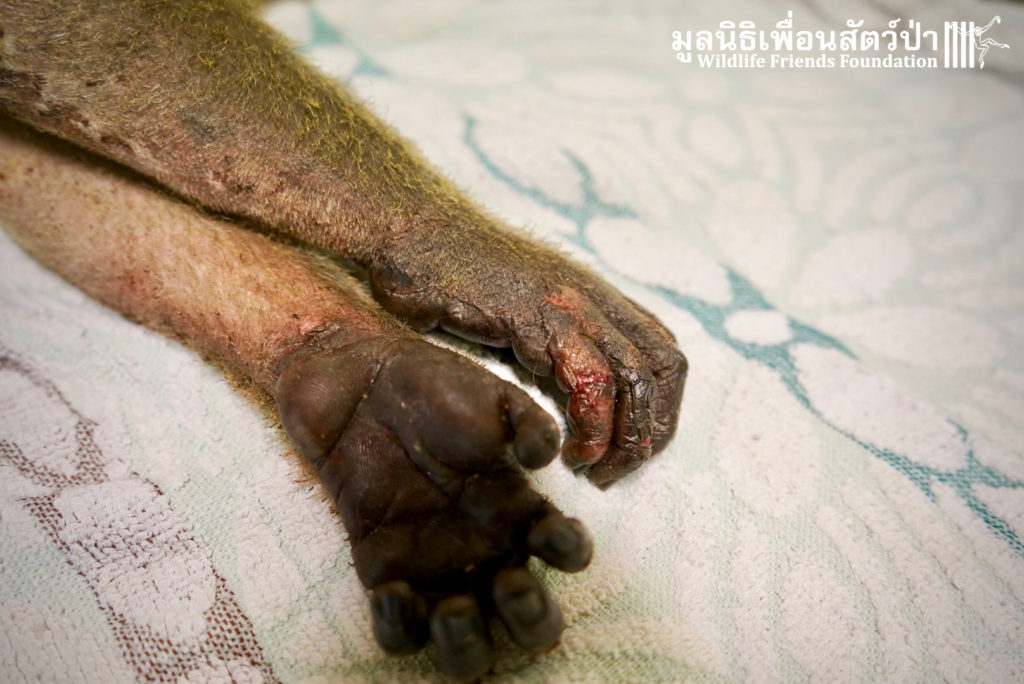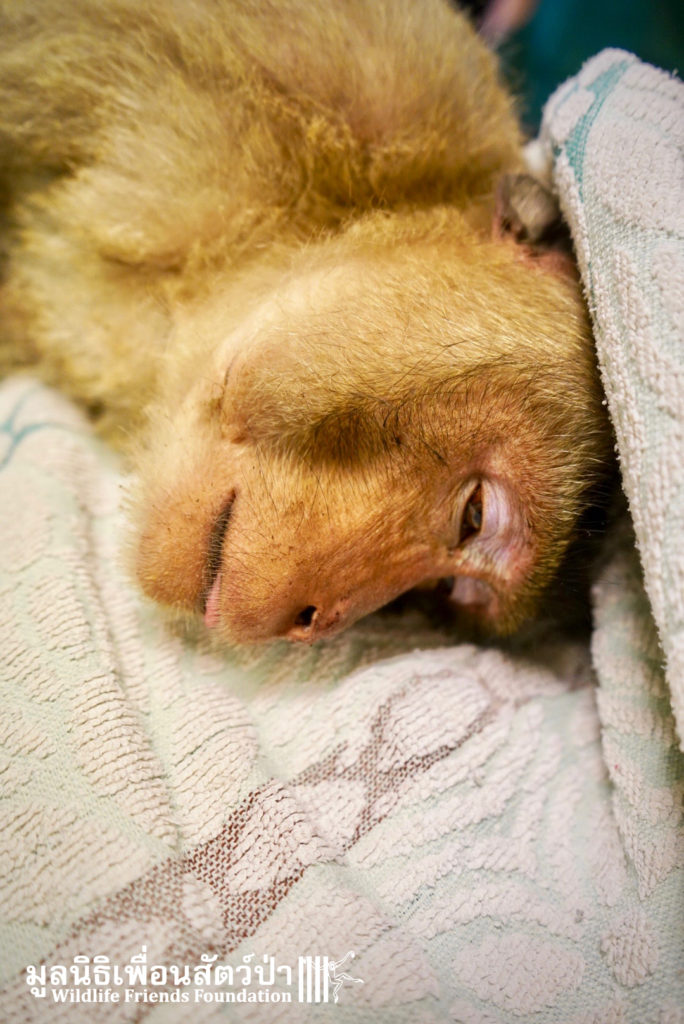Our team rescued a wild long-tailed macaque who had been struck by a car. He has severe injuries but our vets are doing everything possible
What’s that…? A Monkey in a Classroom…?
Yesterday we were called out to a monkey in urgent need of help. A wild adult male long-tailed macaque (Macaca fascicularis) had found refuge in a classroom of primary school after being electrocuted on exposed power lines. The school called us for help so the WFFT Wildlife Rescue Team headed out straight away. Upon arrival to the scene the team found a stressed animal that had sustained third degree burns to his arms and legs. A macaque locked in classroom is very dangerous animal. The team managed to capture him and rushed him back to WFFT for urgent veterinary treatment. We have named him ‘Gaston’. Gaston is currently under intensive care at the WFFT Wildlife Hospital. We are unsure if he will survive this horrifying ordeal. We will do everything we can to give him the best chance. Please send positive thoughts for Gaston. We will keep you posted.
The long-tailed macaque is listed as Least Concern (LC) by the IUCN Red list of Threatened Species, in view of its wide distribution, presumed large population, tolerance of a broad range of habitats, occurrence in a number of protected areas. Habitat loss and degradation due to human encroachment, pose the biggest threat to all macaque species. They are regularly persecuted as pests. Increasing competition between macaques and humans due the increase in need of land for agriculture and other human activities is the foremost reason that macaques are persecuted as pests. Hostile encounters with macaques are common in urban areas due to the active promotion of their presence for spiritual and entertainment purposes by provisioning food for the macaques. We (humans) both promote population growth through the provision of food and the protection habitat, and on the other hand we hinder it through the continued fragmentation of habitat, capture and exportation for research, and the pet-trade.

